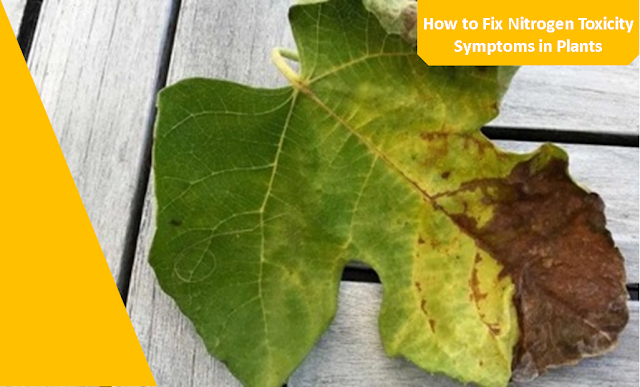How to Fix Nitrogen Toxicity Symptoms in Plants
Gardens, Houseplant - In plants, nitrogen may result in toxicity by being transferred from the soil to the plant as a result of an increase in the level of nitrogen. However, some plants can tolerate some amount of nitrate in their system without any harm. In such cases, the nitrate content does not have a harmful effect on the plants if it is less than 25 ppm.
Toxicity symptoms may be seen as a yellowing of leaves, a reduction in growth and a slow wilting of the plant. Other symptoms include necrosis and browning of leaf edges. The presence of lesions or dead spots on plants can be caused due to excess levels of nitrates in the system. Nitrogen toxicity results from an over supply of nitrogen from fertilizers, which leads to an accumulation of toxic proteins in plants.
The symptoms of nitrogen toxicity are often recognized too late. The symptoms of nitrogen toxicity in plants are different. Nitrogen toxicity in plants is always caused due to the presence of excessive nitrogen in the soil and over-fertilization of the beds. Plants require nitrogen during the vegetative stage of their growth but get dormant if the supply is not checked.
What Causes Nitrogen Toxicity?
Nitrogen is assimilated by plants through roots as nitrates, ammonium, amino acids, etc. Ammonium is used by plants only when they are grown under stressful conditions or when there is a lack of nitrates or phosphates in the soil. Ammonium ions are toxic to most living organisms, including plants. If ammonia levels are high in the soil, its absorption will have adverse reactions on plant growth and health which leads to stunted growth with pale coloration, curling leaves with yellow patches and wilting.
Nitrogen toxicity causes poor root development which leads to less absorption of water and nutrients from soil. Stunted roots lead to slow growth and pale yellowing leaves due to lack of chlorophyll pigment resulting in death of leaf cells. Severe cases can result in wilting, brown discoloration along veins of leaves along with stunting of stems which leads to death of plant.
Lack of oxygen is another cause of death to plants growing in pots or beds with excess levels of nitrates. Therefore, it is necessary that you use a water softener that provides for sufficient aeration to prevent any problems related to nitrates.
How to Fix Nitrogen Toxicity Symptoms in Plants
- If possible, get an NPK soil tester kit to check out the nitrogen levels in the soil.
- Add organic matter to the soil, such as autumn leaves, straw, and coconut coir. The organisms present in the soil use nitrogen to break down these particles that, in turn, release nitrogen in a manageable form.
- Flush the excess nitrogen from the soil using water with a neutral pH. Also, take these measures suggested here to avoid overfertilization.
- Make sure to maintain the correct pH of the growing medium. Excessive alkaline or acidic state will induce nitrogen toxicity in the soil.
- Add a little potassium to the medium to help the plants bloom and fruit. Diluted seaweed solution provides resistance to pests and diseases.
- Replace the growing medium with fresh soil. Avoid hard or tap water that is rich in minerals.
- Start using low nitrogen fertilizer until the excess nitrogen problem is subsided.
How Long Does It Take to Recover?
It takes 5-7 days to treat nitrogen toxicity in most plants. However, the time depends on the level of the nutrient concentration in the medium. Give your plant some time to recover and rejuvenate after the undesirable condition.

Post a Comment for "How to Fix Nitrogen Toxicity Symptoms in Plants"